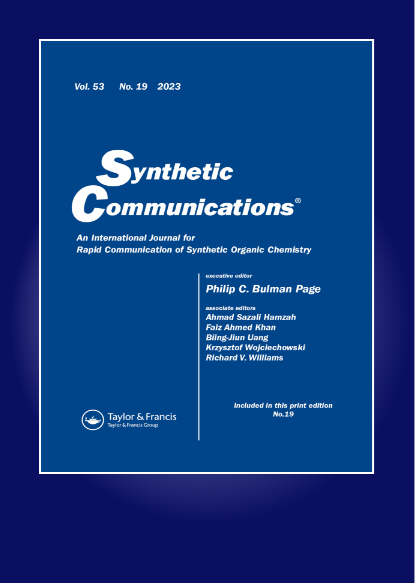利用金属催化剂合成哌啶n -芳基化的新策略:一种潜在的生物活性分子模板
IF 1.8
3区 化学
Q3 CHEMISTRY, ORGANIC
引用次数: 0
摘要
n -芳基哌啶是各种药物、农用化学品和其他有机物质的基本支架。这部分是多种药物结构的组成部分。它具有广泛的生物学应用,包括抗生素、抗癌、抗真菌、抗炎、降压、镇痛和抗精神病活性。许多过渡金属催化剂被用于通过偶联反应实现哌啶的n -芳基化。Ullmann和Buchwald-Hartwig偶联反应是最常用的通过C-N键形成将哌啶部分与芳基连接的方法。多组分、微波介导、缩合、环化、加成和无金属反应也可用于哌啶的n -芳基化。本文综述了2019-2024年报道的哌啶n -芳基化的不同途径。本文章由计算机程序翻译,如有差异,请以英文原文为准。
Recent synthetic strategies for N-arylation of piperidine using metal catalysts: A potential template for biologically active molecules
N-Arylpiperidine is an essential scaffold of various pharmaceuticals, agrochemicals, and other organic substances. This moiety is an integral part of the structure of a variety of drugs. It demonstrates an extensive scope of biological applications, including antibiotic, anticancer, antifungal, anti-inflammatory, antihypertensive, analgesic, and antipsychotic activities. Numerous transition metal catalysts are used for the N-arylation of piperidine via coupling reactions. Ullmann and Buchwald-Hartwig coupling reactions are the most commonly used methods to link the piperidine moiety with the aryl group via C-N bond formation. Multicomponent, microwave-mediated, condensation, cyclization, addition, and metal-free reactions are also employed for the N-arylation of piperidine. This review presents different routes for N-arylation of piperidine reported in 2019–2024.
求助全文
通过发布文献求助,成功后即可免费获取论文全文。
去求助
来源期刊

Synthetic Communications
化学-有机化学
CiteScore
4.40
自引率
4.80%
发文量
156
审稿时长
4.3 months
期刊介绍:
Synthetic Communications presents communications describing new methods, reagents, and other synthetic work pertaining to organic chemistry with sufficient experimental detail to permit reported reactions to be repeated by a chemist reasonably skilled in the art. In addition, the Journal features short, focused review articles discussing topics within its remit of synthetic organic chemistry.
 求助内容:
求助内容: 应助结果提醒方式:
应助结果提醒方式:


